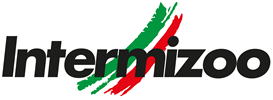“The seasons aren’t what they used to be” is now a very frequent exclamation between farmes! In fact, nowadays global temperatures are higher and higer and Earth’s rate of warming of the past 40 years is more than twice. Probabily it is going to increase up to 1.5°C within 2030-2050.
Global warming effects already have significat impact for the primary sector and agriculture (mild winter, rainy spring) but now is having severe impact also for the welfare and performance of dairy cows.
As a matter of fact, cows begin to experience heat stress at much lower temperatures than humans. In general, heat stress starts around 25°C, with some variations due to the fisiological and productive condition of the cow.
Heat stress costs farmers money and can be crucial from different points of view:
- Heat-stressed lactating cows have reduced dry matter intake, milk production and pregnancy rates.

- Heat stress also leads to increased lameness, disease incidence, days open and death rates.
- Heat-stressed late gestation cows have shorter gestation periods, calves with lower birth weights, reduced milk production and impaired immune function.
Heat stress occurs when cows generate and absorb more heat than they can easily get rid of by respiration, sweating and air blowing by them. The combination of both temperature and humidity allow to estimate the level of heat stress and it is called THI – Temperature-Humidity Index.
Could heat tolerance selection be possible?
Many studies highlighted important differences both within and between breeds in heat tolerance trait. In the early 2000s some researches (Ravagnolo et al., 2000, 2002) predicted the genetic correlation between resistence and productive/reproductive characteristics. The correlation was between -0.23 and -0.41: this means that an extreme selection for productive traits involves heat/humidity senstive cows. On the other hand, improving management traits could lead to the indirect increas of the heat tolerance.
In December 2017, in Australia, it has been pubblished the first heat tolerance index for dairy cow and this topic is now under investigation also for the Italian Hosltein Selection. ANAFIBJ has a fresh news coming for the next Holstein Bulls evaluation of April!

